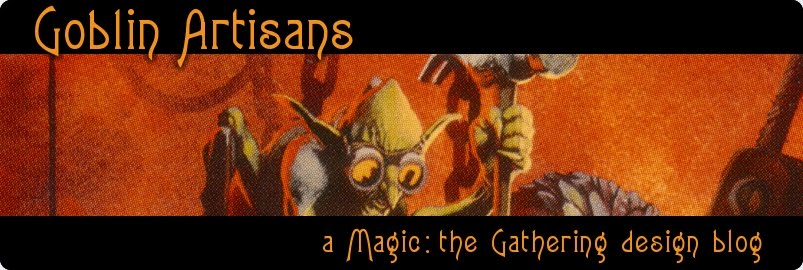 Cool Card Design of the Day
6/23/2011
Cool Card Design of the Day
6/23/2011 - A couple weeks ago I was thinking about the
flip mechanic from Kamigawa. Flipping falls under the same category of mechanics as
split cards, modal cards (see
charms and
commands) and
level-up cards: basically, things that can be other things. Despite their similarities there are important differences and if you design a card using one of these methods that could just as easily be designed using another method, you've almost surely stepped over the line.
For example, a split card where both sides have the same mana cost and card type might as well just be modal. So what is required to justify a flip card? There
must be a way to flip it during the game or else it's a just split or level-up card. I've got some quirky flip permanents I'll show you tomorrow, but I really wanted to crack the nut that is instant/sorcery flip cards. Such spells are normally one and done, but if they're going to flip, they can't just have two sides, there has to be a way to cast both sides.
My answer is flipback:
 Cool Card Design of the Day
Cool Card Design of the Day
